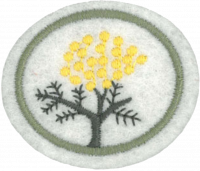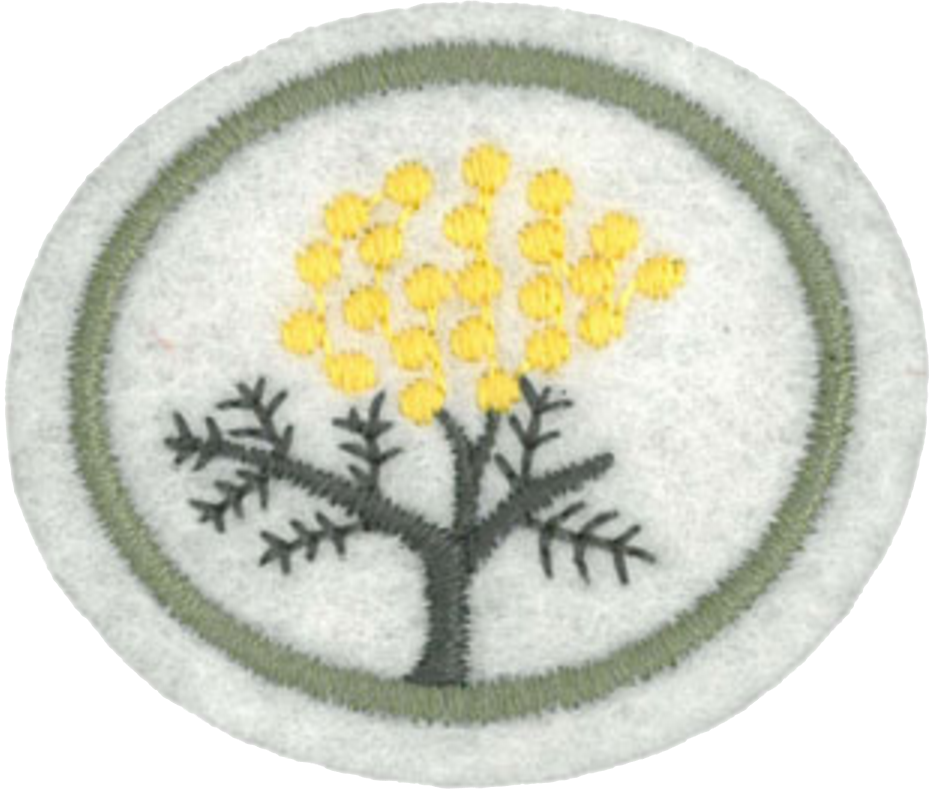Difference between revisions of "AY Honors/Wattles/Answer Key/pt-br"
From Pathfinder Wiki
(Created page with "{{clear}}") |
(Created page with "</noinclude> <!-- 12. Faz uma colecção com 10 ou mais acácias secas com flores e phyllodes e se possível com as vagens e as sementes. Identifica cada uma delas com a data,...") |
||
| (13 intermediate revisions by the same user not shown) | |||
| Line 23: | Line 23: | ||
{{CloseReq}} <!-- 2 --> | {{CloseReq}} <!-- 2 --> | ||
{{ansreq|page={{#titleparts:{{PAGENAME}}|2|1}}|num=3}} | {{ansreq|page={{#titleparts:{{PAGENAME}}|2|1}}|num=3}} | ||
| − | <noinclude> | + | <noinclude></noinclude> |
| − | </noinclude> | + | <!-- 3. Como estão classificadas as acácias em dois grupos grandes? --> |
| − | <!-- 3. | ||
| − | |||
| − | |||
| − | |||
| − | |||
| − | |||
| − | |||
| − | |||
| − | |||
{{clear}} | {{clear}} | ||
| Line 42: | Line 33: | ||
{{CloseReq}} <!-- 3 --> | {{CloseReq}} <!-- 3 --> | ||
{{ansreq|page={{#titleparts:{{PAGENAME}}|2|1}}|num=4}} | {{ansreq|page={{#titleparts:{{PAGENAME}}|2|1}}|num=4}} | ||
| − | <noinclude> | + | <noinclude></noinclude> |
| − | </noinclude> | + | <!-- 4. Qual é a forma da semente na vagem e de que maneira a maneira de estar na vagem ajuda na identificação? --> |
| − | <!-- 4. | ||
| − | |||
| − | |||
{{clear}} | {{clear}} | ||
| Line 53: | Line 41: | ||
{{CloseReq}} <!-- 4 --> | {{CloseReq}} <!-- 4 --> | ||
{{ansreq|page={{#titleparts:{{PAGENAME}}|2|1}}|num=5}} | {{ansreq|page={{#titleparts:{{PAGENAME}}|2|1}}|num=5}} | ||
| − | <noinclude> | + | <noinclude></noinclude> |
| − | </noinclude> | + | <!-- 5. Quantas espécies de acácias existentes na tua região têm folhas verdadeiras (bipinadas) quando adultas? --> |
| − | <!-- 5. | ||
| − | |||
| − | |||
| − | |||
{{clear}} | {{clear}} | ||
| Line 65: | Line 49: | ||
{{CloseReq}} <!-- 5 --> | {{CloseReq}} <!-- 5 --> | ||
{{ansreq|page={{#titleparts:{{PAGENAME}}|2|1}}|num=6}} | {{ansreq|page={{#titleparts:{{PAGENAME}}|2|1}}|num=6}} | ||
| − | <noinclude> | + | <noinclude></noinclude> |
| − | </noinclude> | + | <!-- 6. Quando se semeia acácias o que é que se vê primeiro, as folhas verdadeiras ou os phyllodes? Quantas têm folhas verdadeiras? --> |
| − | <!-- 6. | ||
| − | |||
| − | |||
{{clear}} | {{clear}} | ||
| Line 76: | Line 57: | ||
{{CloseReq}} <!-- 6 --> | {{CloseReq}} <!-- 6 --> | ||
{{ansreq|page={{#titleparts:{{PAGENAME}}|2|1}}|num=7}} | {{ansreq|page={{#titleparts:{{PAGENAME}}|2|1}}|num=7}} | ||
| − | <noinclude> | + | <noinclude></noinclude> |
| − | </noinclude> | + | <!-- 7. O que deve acontecer a uma semente de acácia antes que ela germine e cresça? --> |
| − | <!-- 7. | ||
| − | |||
| − | |||
<noinclude></noinclude> | <noinclude></noinclude> | ||
{{CloseReq}} <!-- 7 --> | {{CloseReq}} <!-- 7 --> | ||
{{ansreq|page={{#titleparts:{{PAGENAME}}|2|1}}|num=8}} | {{ansreq|page={{#titleparts:{{PAGENAME}}|2|1}}|num=8}} | ||
| − | <noinclude> | + | <noinclude></noinclude> |
| − | </noinclude> | + | <!-- 8. As acácias phyllodes são utilizadas para alimentar o quê durante os períodos de seca? --> |
| − | <!-- 8. | ||
| − | |||
| − | |||
{{clear}} | {{clear}} | ||
| Line 98: | Line 73: | ||
{{CloseReq}} <!-- 8 --> | {{CloseReq}} <!-- 8 --> | ||
{{ansreq|page={{#titleparts:{{PAGENAME}}|2|1}}|num=9}} | {{ansreq|page={{#titleparts:{{PAGENAME}}|2|1}}|num=9}} | ||
| − | <noinclude> | + | <noinclude></noinclude> |
| − | </noinclude> | + | <!-- 9. Na Austrália a casca de algumas acácias é utilizada para quê? --> |
| − | <!-- 9. | ||
| − | |||
| − | |||
<noinclude></noinclude> | <noinclude></noinclude> | ||
{{CloseReq}} <!-- 9 --> | {{CloseReq}} <!-- 9 --> | ||
{{ansreq|page={{#titleparts:{{PAGENAME}}|2|1}}|num=10}} | {{ansreq|page={{#titleparts:{{PAGENAME}}|2|1}}|num=10}} | ||
| − | <noinclude> | + | <noinclude></noinclude> |
| − | </noinclude> | + | <!-- 10. Que espécies de acácias são utilizadas para fazer móveis? --> |
| − | <!-- 10. | ||
| − | |||
| − | |||
<noinclude></noinclude> | <noinclude></noinclude> | ||
{{CloseReq}} <!-- 10 --> | {{CloseReq}} <!-- 10 --> | ||
{{ansreq|page={{#titleparts:{{PAGENAME}}|2|1}}|num=11}} | {{ansreq|page={{#titleparts:{{PAGENAME}}|2|1}}|num=11}} | ||
| − | <noinclude> | + | <noinclude></noinclude> |
| − | </noinclude> | + | <!-- 11. Como é que as acácias são úteis aos Homem, aos animais, aos insectos e aos pássaros? --> |
| − | <!-- 11. | ||
| − | |||
| − | |||
| − | |||
{{clear}} | {{clear}} | ||
| Line 143: | Line 108: | ||
{{clear}} | {{clear}} | ||
| − | |||
| − | |||
| − | |||
| − | |||
{{clear}} | {{clear}} | ||
| − | |||
| − | + | {{clear}} | |
| − | |||
| − | |||
| − | |||
| − | + | <noinclude></noinclude> | |
| − | <noinclude | ||
| − | |||
{{CloseReq}} <!-- 11 --> | {{CloseReq}} <!-- 11 --> | ||
{{ansreq|page={{#titleparts:{{PAGENAME}}|2|1}}|num=12}} | {{ansreq|page={{#titleparts:{{PAGENAME}}|2|1}}|num=12}} | ||
| − | <noinclude> | + | <noinclude></noinclude> |
| − | </noinclude> | + | <!-- 12. Faz uma colecção com 10 ou mais acácias secas com flores e phyllodes e se possível com as vagens e as sementes. Identifica cada uma delas com a data, local onde foram apanhadas, o nome popular e o nome científico. Algumas flores têm de ser do tipo espiga, algumas do tipo racimo ou bagas, algumas com folhas bipinadas OU 20 fotografias onde possas mostrar os detalhes acima referidos. --> |
| − | <!-- 12. | ||
| − | |||
| − | |||
| − | + | <noinclude></noinclude> | |
| − | <noinclude | ||
| − | |||
{{CloseReq}} <!-- 12 --> | {{CloseReq}} <!-- 12 --> | ||
| − | <noinclude> | + | <noinclude></noinclude> |
| − | </noinclude> | + | ==Referências== |
| − | == | + | [[Category:Adventist Youth Honors Answer Book/pt-br]] |
| − | + | <noinclude></noinclude> | |
| − | |||
| − | |||
| − | |||
| − | [[Category:Adventist Youth Honors Answer Book | ||
| − | <noinclude | ||
| − | |||
{{CloseHonorPage}} | {{CloseHonorPage}} | ||
Latest revision as of 13:36, 12 August 2021
1
Qual é o número aproximado de variedades de vime conhecidas e existentes na Austrália?
2
O que são phyllodes? Que trabalhos se podem fazer com esta planta? Por que é que os phyllodes são tão importantes no estudo das acácias?
3
Como estão classificadas as acácias em dois grupos grandes?
4
Qual é a forma da semente na vagem e de que maneira a maneira de estar na vagem ajuda na identificação?
5
Quantas espécies de acácias existentes na tua região têm folhas verdadeiras (bipinadas) quando adultas?
6
Quando se semeia acácias o que é que se vê primeiro, as folhas verdadeiras ou os phyllodes? Quantas têm folhas verdadeiras?
7
O que deve acontecer a uma semente de acácia antes que ela germine e cresça?
8
As acácias phyllodes são utilizadas para alimentar o quê durante os períodos de seca?
9
Na Austrália a casca de algumas acácias é utilizada para quê?
10
Que espécies de acácias são utilizadas para fazer móveis?
11
Como é que as acácias são úteis aos Homem, aos animais, aos insectos e aos pássaros?
12
Faz uma colecção com 10 ou mais acácias secas com flores e phyllodes e se possível com as vagens e as sementes. Identifica cada uma delas com a data, local onde foram apanhadas, o nome popular e o nome científico. Algumas flores têm de ser do tipo espiga, algumas do tipo racimo ou bagas, algumas com folhas bipinadas.
OU
20 fotografias onde possas mostrar os detalhes acima referidos.
20 fotografias onde possas mostrar os detalhes acima referidos.


